Taking the jump from algebra to the land of matrices ?
 Follow Math Hacks on Instagram
Follow Math Hacks on Instagram
Confession: I love linear algebra. Okay, maybe that?s not much of a confession, but I do love it! In a large part, because linear algebra doesn?t feel like the rest of mathematics, it feels like a puzzle.
Now that may sound crazy, but hear me out.
This new land of matrices and vectors may look and feel intimidating, and for good reason: new notation, new rules, new properties. It?s all a bit different. But maybe viewing it as a puzzle will help you jump over that new notation hurdle.
Ready to give it a try?
Where to start?
I believe the best place to start with linear algebra is with solving systems of equations because it?s something you?ve probably learned already. Remember the substitution and elimination methods?? Do those ring a bell? If not, you can refresh your memory here. ?
Today we are going to take a new approach to solve systems of equations using a method called Gaussian Elimination.
What is Gaussian Elimination??
Gaussian elimination is a method where we translate our equations into a matrix and use the matrix to solve the system (i.e. find the solutions for each variable that make all the equations true).
I?m going to walk you step-by-step through a simplified example today (the numbers work out nicely so there are far fewer steps!). If you would like a more in-depth example, check out my youtube tutorial on Gaussian Elimination below ?
Click here to subscribe to Math Hacks on YouTube ?
The Set Up
Just like starting a card game by shuffling and dealing, the start of our game of Gaussian Elimination begins by translating our equations into a matrix.
Here?s the system we are going to solve:
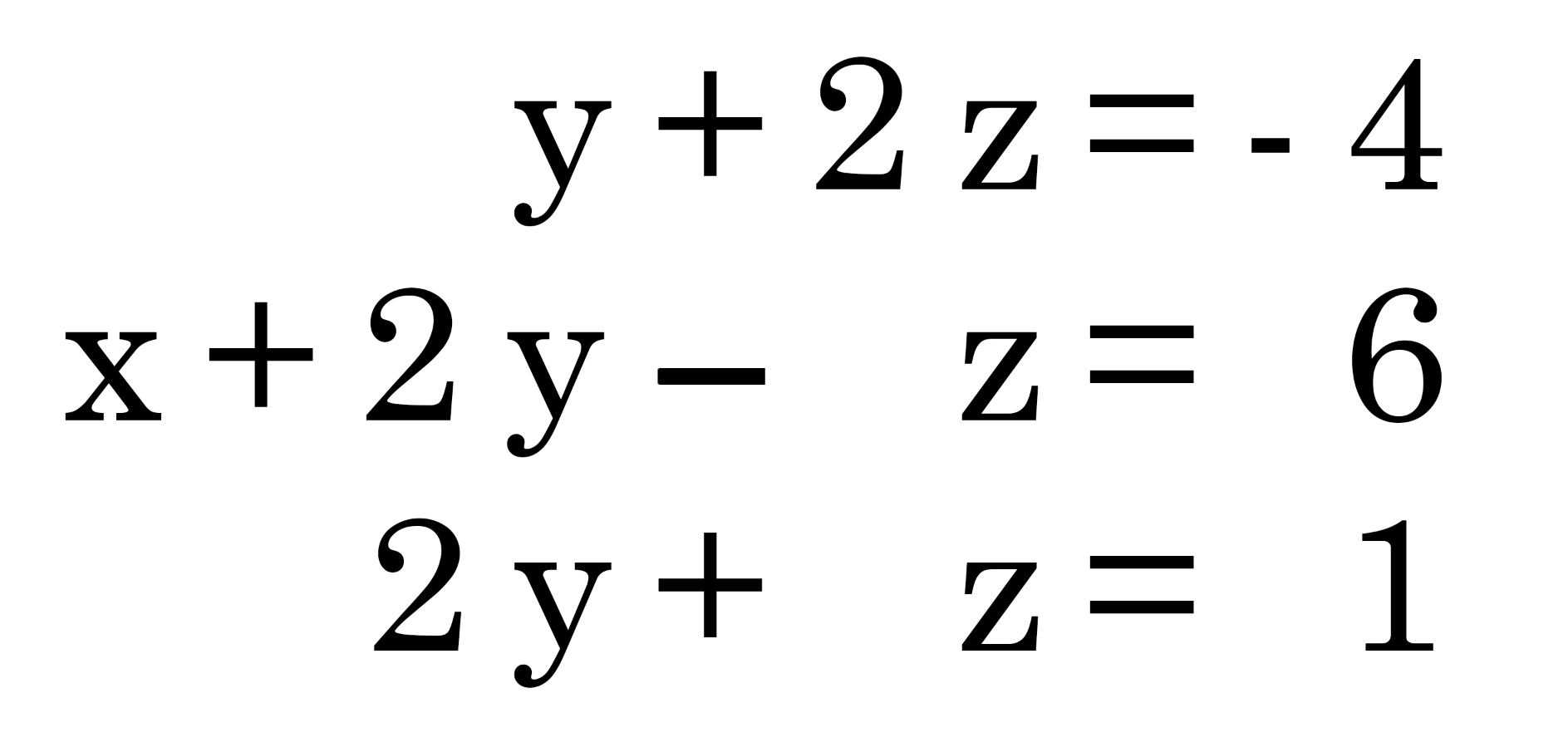
The very first thing you need to recognize is that there is a lot of hidden information in our system. In red I?ll add in the placeholder zeros and ones.
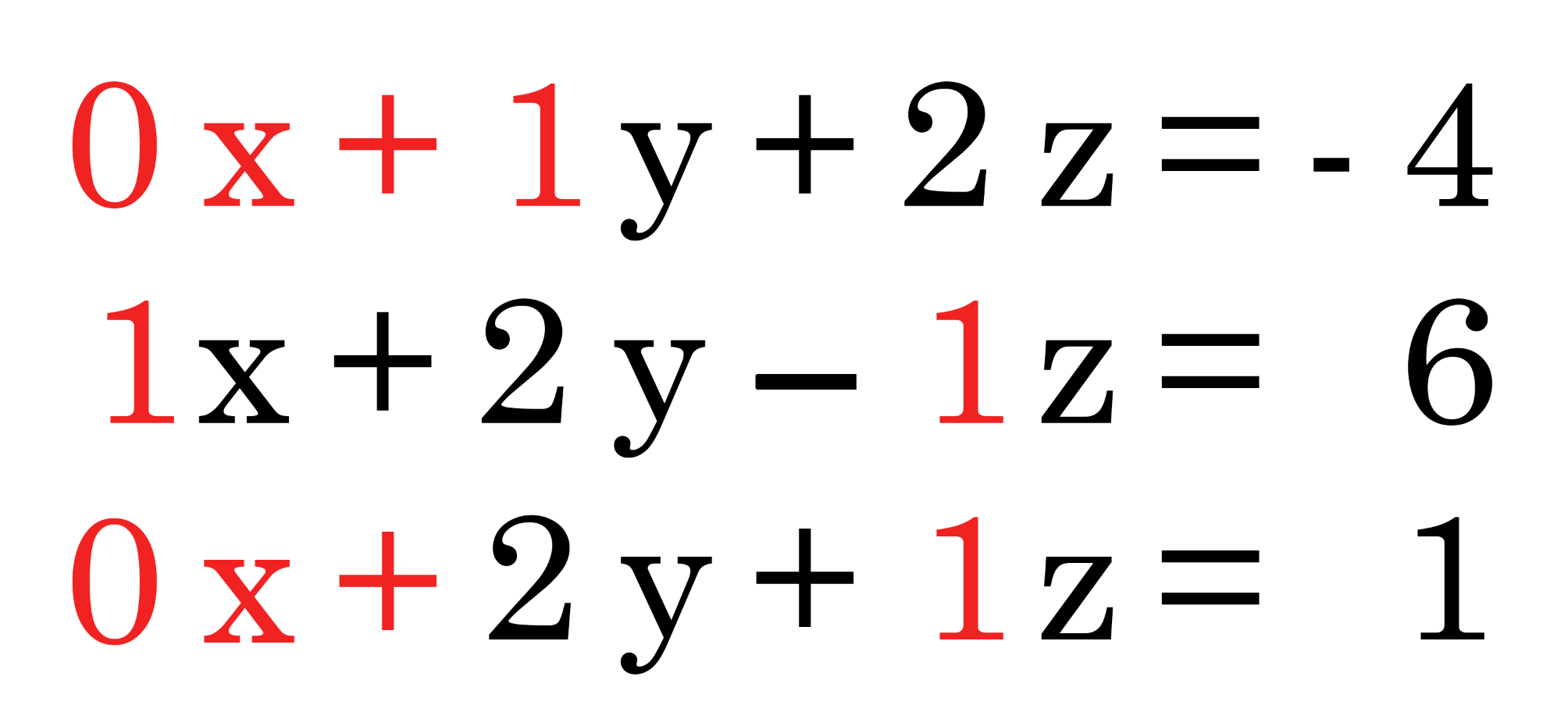
Next, we are going to separate out all of the important numeric information from the extraneous symbols. Now highlighted in red, you?ll find all of the important information we?ll be working with:
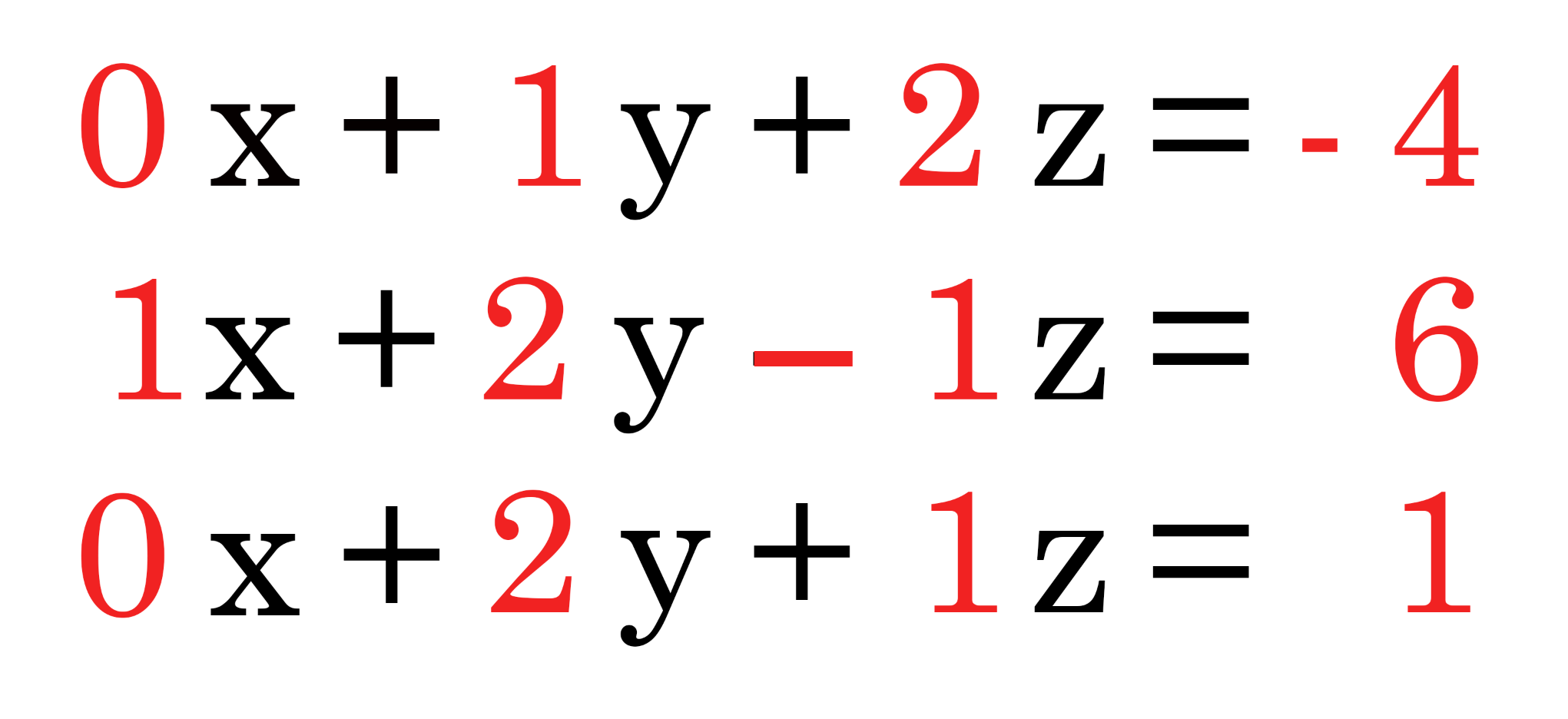
We need to rewrite the numeric values above as a matrix. We?ll drop the letters, equal signs, and addition symbols (but not the minus symbols!) and simply write the numbers in the exact order and rows they appear above.
After we do that we?ll add in big bracket symbols to group them together. This is our matrix:
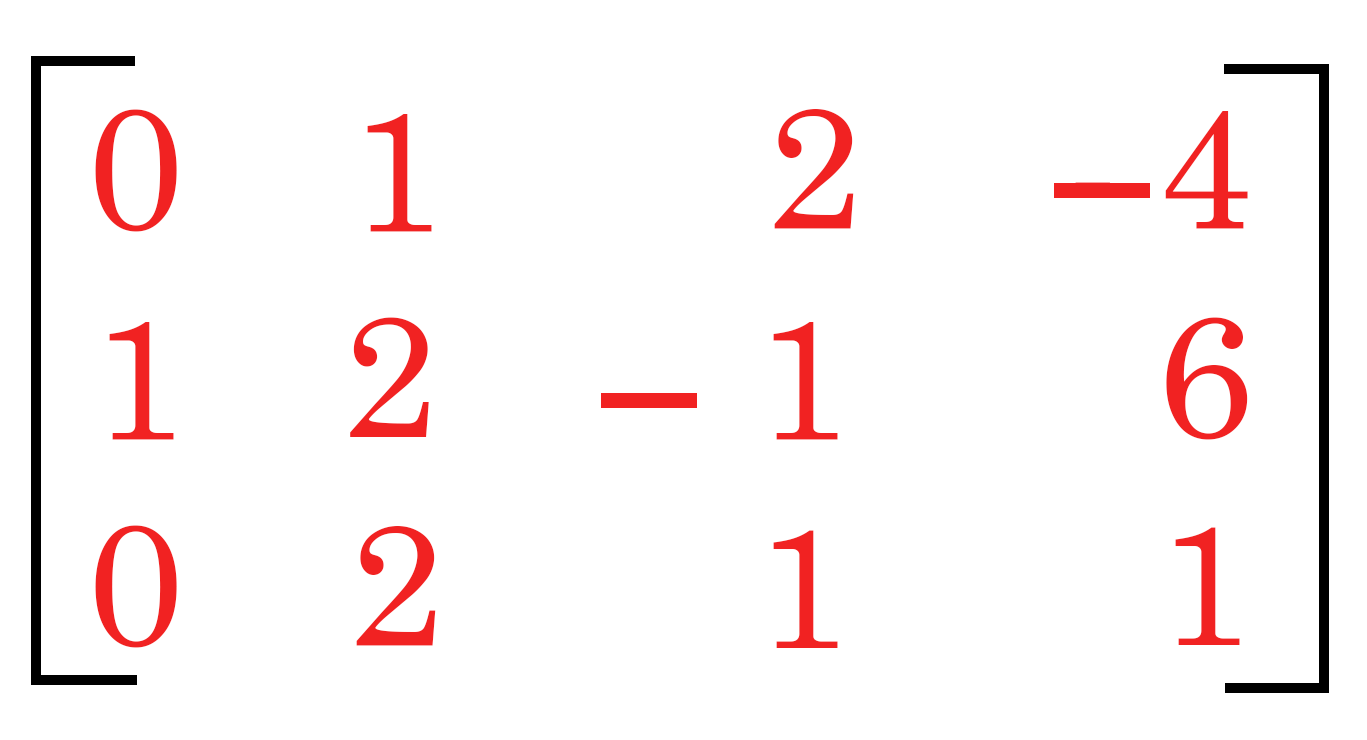
The Rules ?
Like any game, there are a few rules we have to follow:
- You can swap any two rows
- You can multiply or divide any row by a value
- You can add or subtract any two rows together
*Note: you can combine these rules in any one move.
Don?t worry if these don?t quite make sense yet. You?ll see how they operate when we work through our example.
How to Win ?
You win when your matrix looks like this:
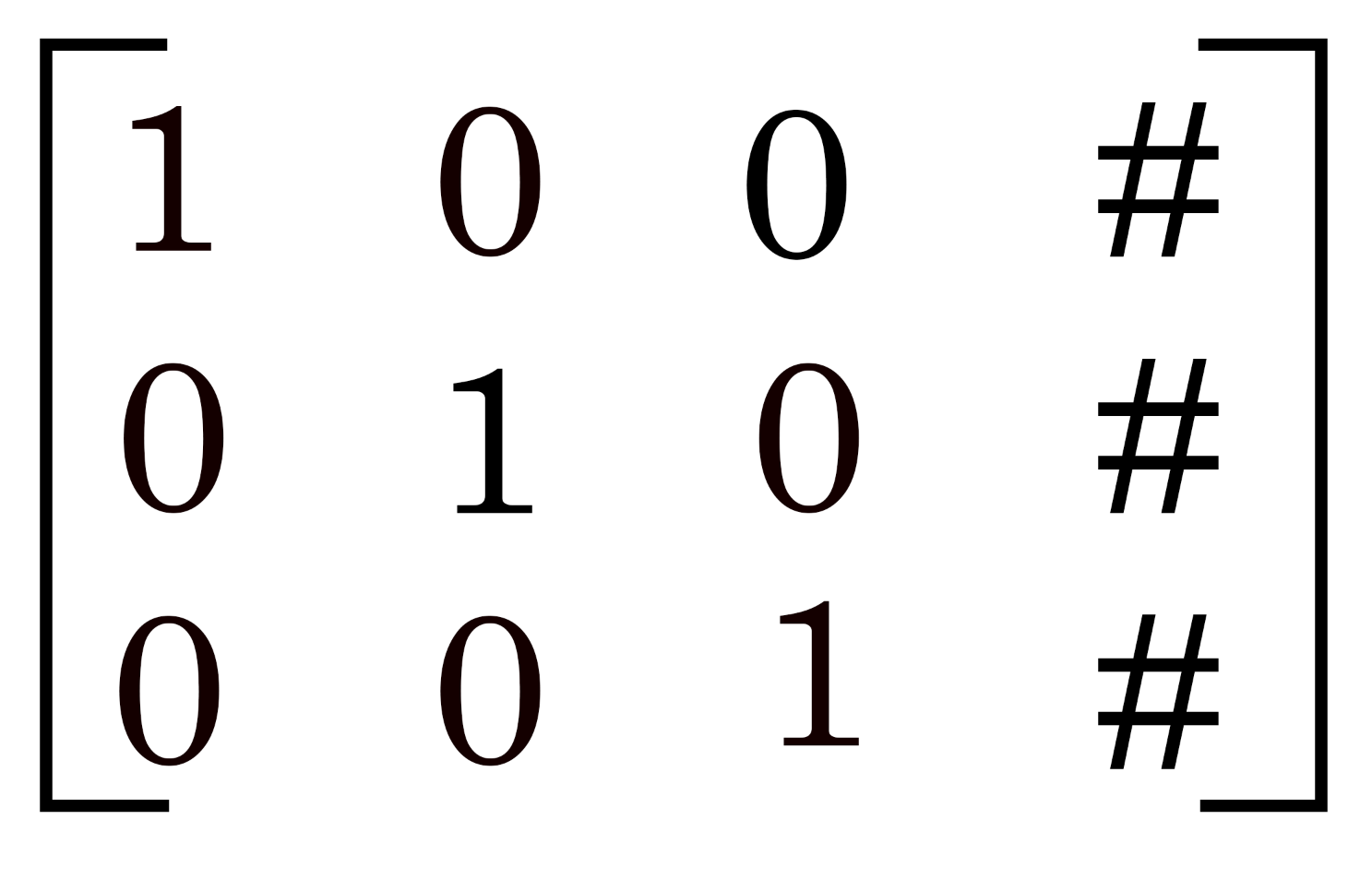
Where the # symbols represent any numbers, and the rest of the matrix has zero?s in each position except for the diagonal ones. This is called Reduced-Row Echelon Form.
Let?s Play!
Start with the matrix you made during the setup step. Now we are going to use the rules to get this matrix across the finish line!
 Starting matrix
Starting matrix
Move 1: Swap Row One and Row Two
There are lots of different ways to get this matrix into the winning form, but I think the easiest way to start is by swapping the first and second row. This way we obtain a 1 in the first position of the first row and a 0 in the first position of the second row.

Move 2: Add -2 times Row Two to Row Three
One thing we are allowed to do is use multiple rules together in one step. In this move, we will take -2 times row two and add those products to row three. This will leave row two unchanged but will help us obtain a zero in third row second position.
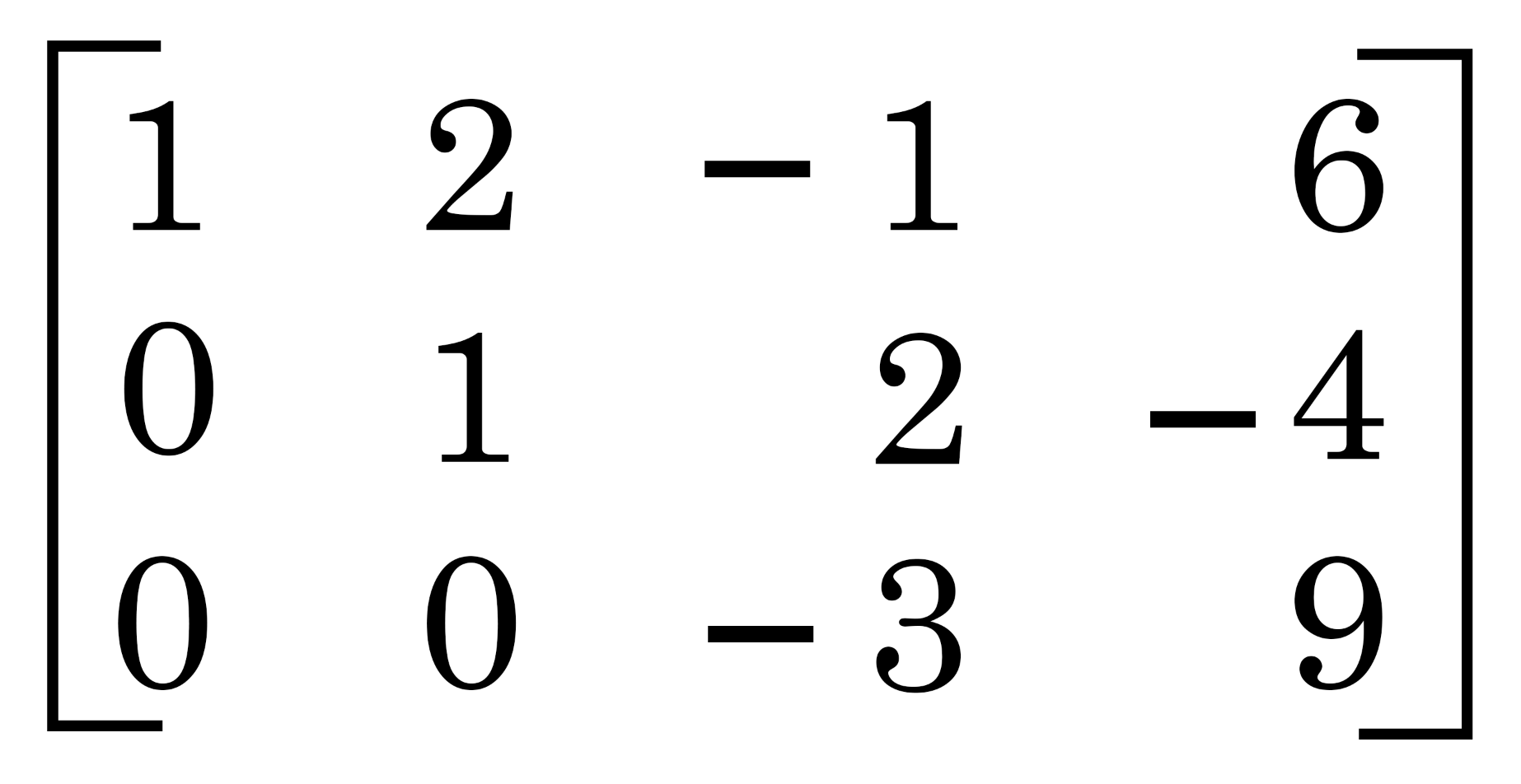
Move 3: Divide Row Three by -3
Next, we will simply divide row three by -3 so that we can obtain a 1 in the third-row third position.

Move 4: Add -2 times Row Three to Row Two
Now that we have all zeros in the bottom left-hand corner surrounded by a diagonal of 1, we are ready to start working on obtaining zeros in the positions above the 1?s.
? But before we do that, I want to make a little side note: our matrix is currently in row echelon form. In this form, you may translate your matrix back into a set of equations, if you wish, and will easily be able to solve for x, y, and z. Today we are working on getting our equation into reduced row echelon form, meaning that we want to obtain zeros in the positions above the 1?s. Often times in linear algebra you will be asked to work all the way to reduced row echelon form as it is the easiest form to read the answer from.
Okay, back to our math. In this next move, we will take -2 times the third row and add it to the second row so that we can obtain a 0 in the third position of row 2.
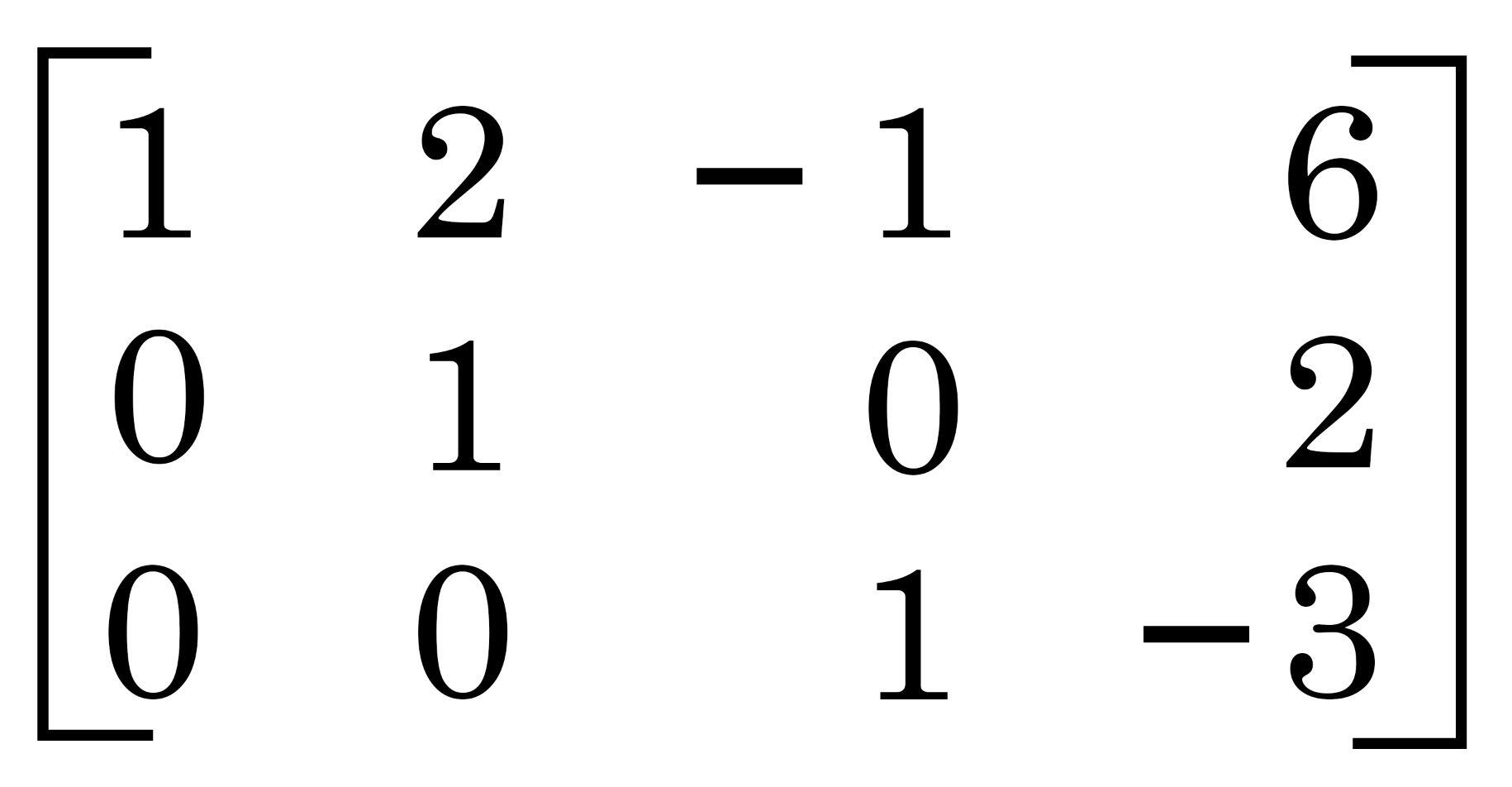
Move 5: Add Row Three to Row One
Next, we will simply add row three to row one since -1 + 1 = 0, that will help us attain a 0 in the third position of the first row.
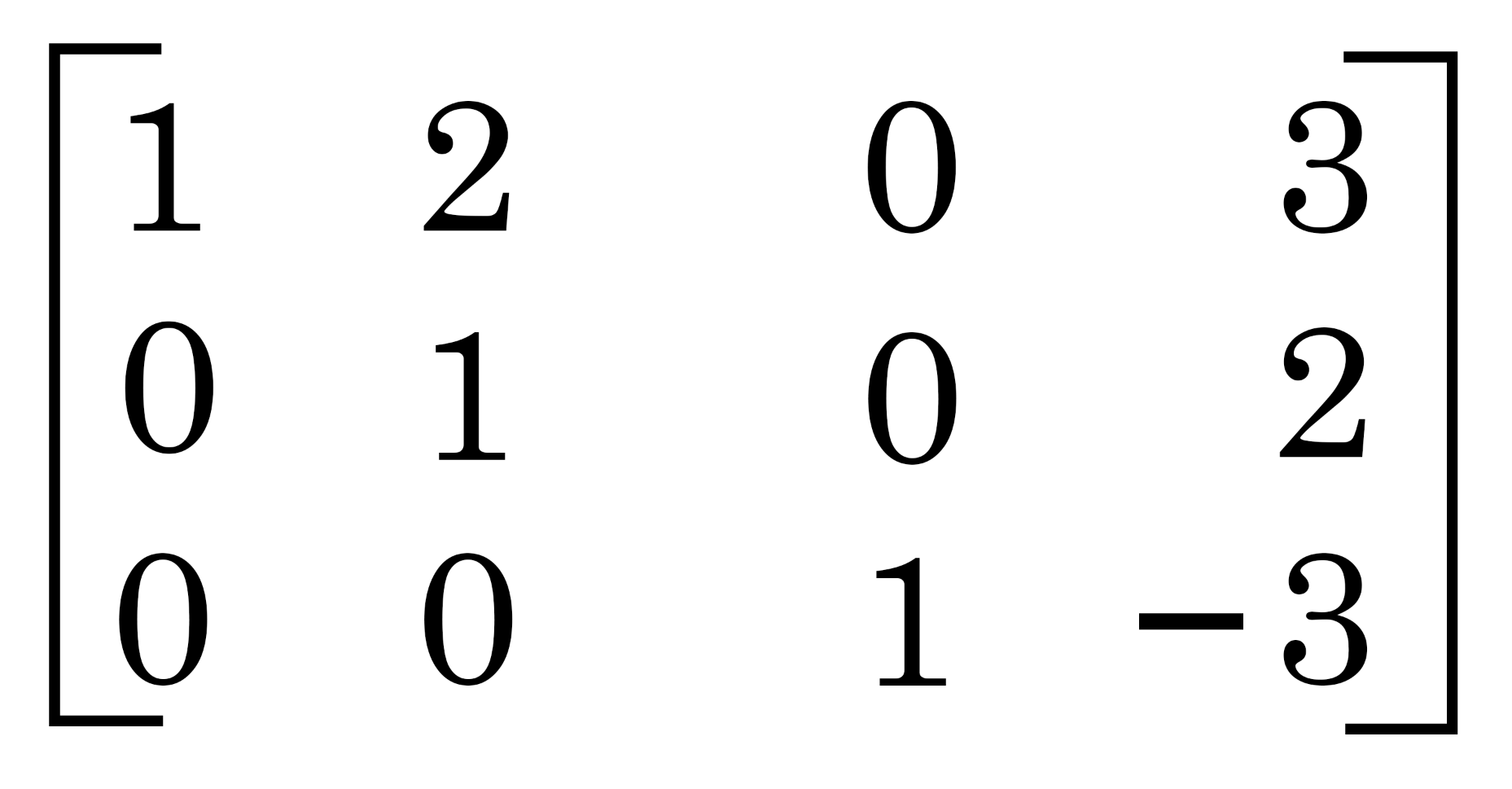
Move 6: Add -2 times Row Two to Row One
Lastly, we will add -2 times row two to the first row in order to obtain a zero in the second position of the first row.
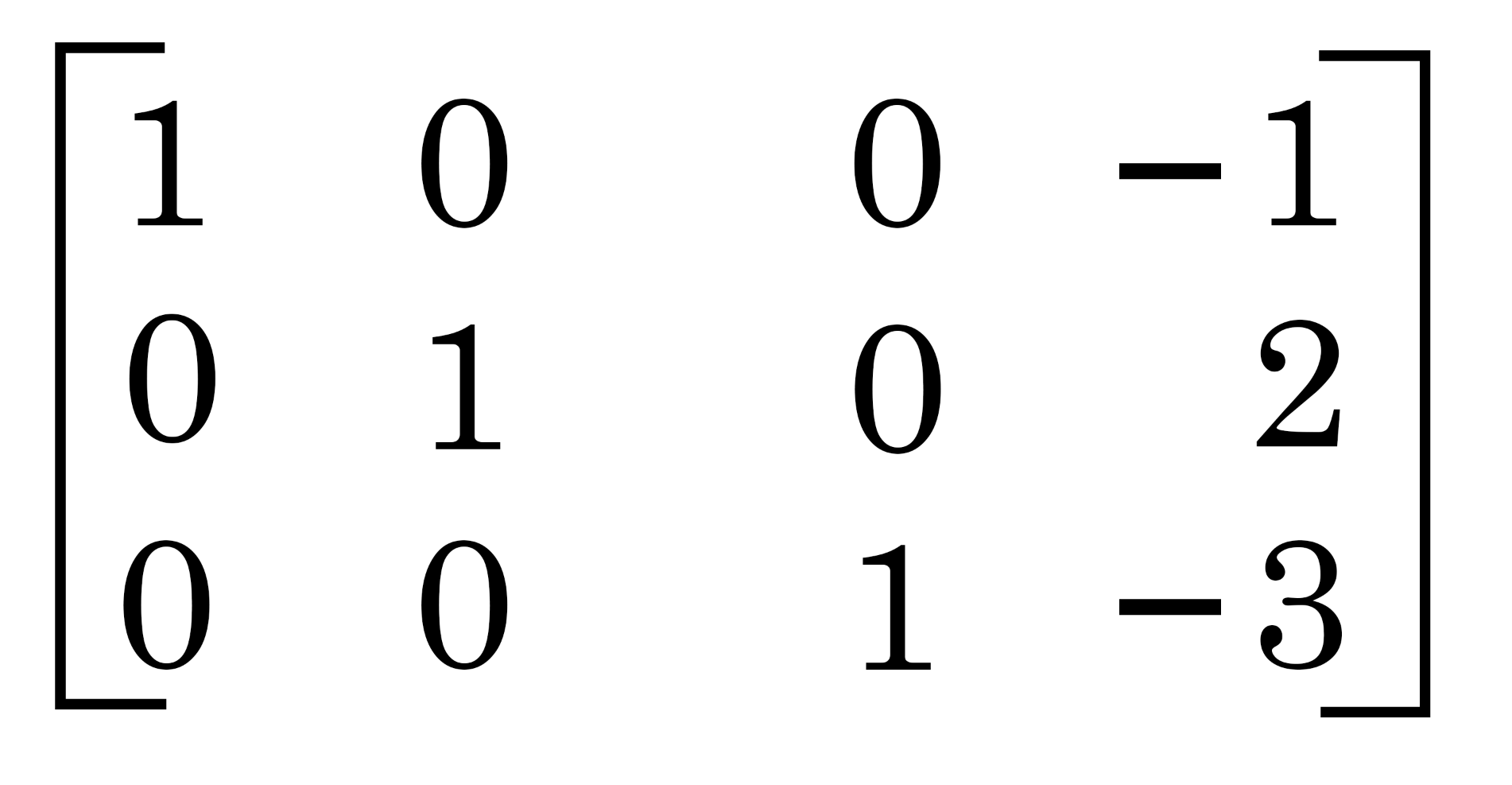
Congratulations, YOU WIN!!?
All we have left to do is read off the answer! To do this simply translate your matrix back into a set of equations, and you?ll see that you have discovered the solutions for x, y, and z.
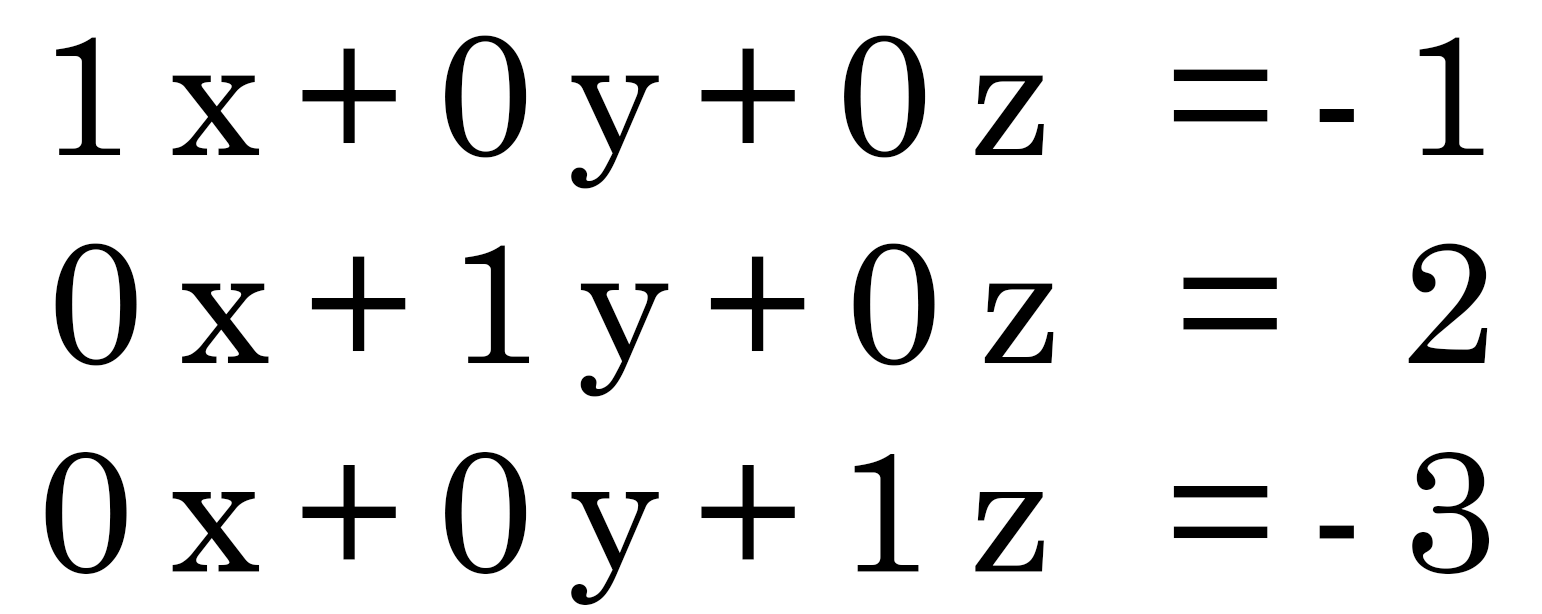
Dropping all the zero terms, you get:
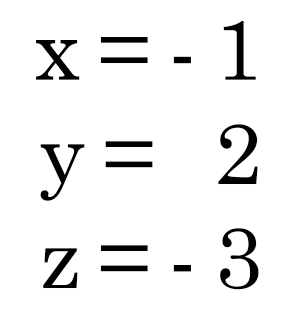
This means that the intersection point in 3-dimensional space where the three planes intersect is at (-1,2,-3).
Remember you can always check your solution by plugging the values back into the original equations.
Not into Matrices??
That?s okay, you can also solve 3×3 systems with good ole algebra ?
Need More Math Help??
- Check out Math Hacks on YouTube for more hands-on math tutorials covering popular topics from Algebra, Trigonometry, Precalculus, and Combinatorics with new videos added every week.
- If you need more help with Gaussian Elimination, I cover a completely different and slightly more challenging problem in the video tutorial linked at the top of this post.
- You can find a number of interesting math topics and problems right here on Medium, just click that follow button!
Thanks for joining me!
? Brett
? STAY CONNECTED ?
for updates & math inspiration follow Brett on social media:
Instagram | Facebook | Twitter


